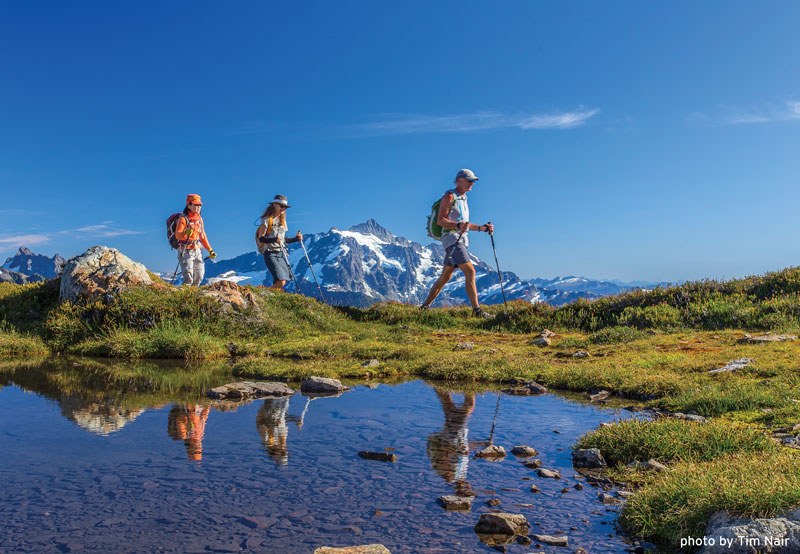
When getting ready for a multi-day adventure, the best way to train is through “back-to-back” weekend outings. Carry a weighted pack, two days in a row, while training and your backpacking, climbing, scrambling or sea kayaking adventures will be that much more comfortable, so you can focus on the scenery rather than your muscles.
By training this way, your body and mind won’t be as shocked when you’re on your multi-day trip. The initial fatigue and soreness will be lessened and if you develop any hot spots, chafing, or problem areas, you can handle them ahead of time.
Back-to-Back training options
You have a few options when training for a multi-day trip. First, figure out how much weight you will be carrying. Then, you can either pack 5-10 pounds more for training and not go as far, or you can pack a little less and challenge yourself with more distance than expected. A third option is to cover more elevation in a shorter distance (so it’s steeper) with the same weight you intend to use on your upcoming adventure.
This will prepare you for any kind of outdoor adventure you may have planned — from a backpack through the Enchantments, to a week on the Wonderland Trail — or even a climb up Mt. Rainier.
In poor weather, or if you can’t get to the mountains, you can do back-to-backs on local hills (the Pacific Northwest has tons) or even in the gym on uphill-climbing gym equipment. Other urban options are building stairs or high school stadiums — all in an effort to get as much elevation gain as possible. To mix it up, on the second day, carry a lighter pack for greater distance on varied terrain such as grass, dirt and gravel. There’s a lot of options for distance and terrain in city parks such as Seward, Discovery and Carkeek.
The best time to include such training is deep into your program, a month prior to your trip — after you have built solid strength endurance in your legs, core, and back muscles and tolerance for heavier pack weight. If you are targeting early July for a climb or backpack, do your first back-to-back in early June to test out your gear and recovery capacity, then mid-June for a final test no closer than two weeks before your trip. This will allow full recovery before you go. Your mind and muscles will thank you.
For more how-to exercises and tips for the outdoor athlete, visit Courtenay Schurman’s website at www.bodyresults.com or send her a question at court@bodyresults.com.
 Courtenay Schurman
Courtenay Schurman